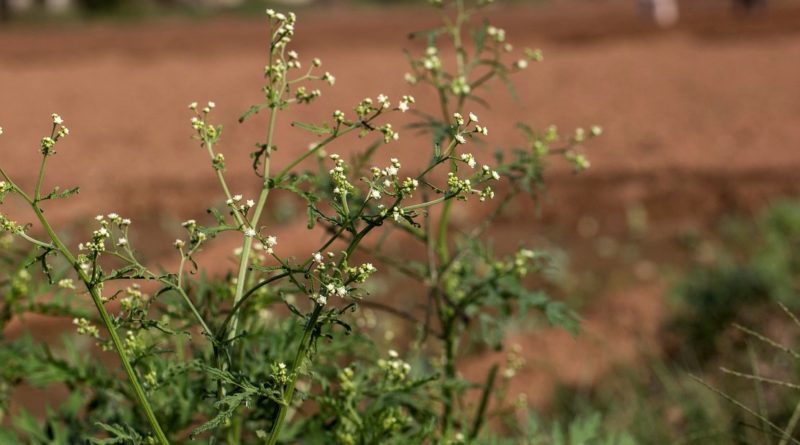What are invasive plants?
When do plants get invasive?
Plants that do not occur naturally in a region but proliferate in the area they have been introduced into, and cause several negative impacts (such as affecting native biodiversity, causing economic losses and harming human health) in these new habitats, are called invasive plants.
However, not all introduced plants are invasive: many alien plants cannot establish in new environments, and some that do establish are not harmful, unlike invasives.
Where do invasive plants come from?
In many cases, aliens or exotics that were deliberately introduced for ornamental, floricultural or agricultural uses have turned invasive. The tropical American shrub lantana (Lantana camara) for instance was introduced in India in the early 19th century as an ornamental plant; it now invades diverse terrestrial habitats including scrublands and forests.

International travel and trade have helped numerous invasives hitch rides into new territories. Seeds or plant fragments can attach themselves to peoples’ clothes or accidentally come along with imports of goods. Parthenium (Parthenium hysterophorus, native to central and south America) is thought to have made its way into India through wheat imports from the United States in 1956.
Invasive plants now occur on every continent on earth, including the remote and hostile ecosystems of Antarctica.
How can invasives thrive in alien environments?
Invasive species display several traits that give them an edge over native flora. They tend to grow faster thanks to higher leaf nutrients and specific leaf areas. They have shorter life cycles, invest heavily in reproduction, produce more seeds, display better dispersal, and even germinate faster.
Similar climates or environmental conditions between the native and invaded habitats of invasives could put some areas at higher risk of invasions. According to a study in 2015, this could be the reason why almost half of India’s geographical area could be at risk of being occupied by invasives. Areas with fewer species also tend to be more vulnerable to invasion.
Many invasives show ‘phenotypic plasticity’: the ability to adapt to new physical conditions in the habitats that they have invaded. Often, human-caused disturbances – including roads and livestock grazing – in its new environment also aids the establishment and spread of alien invasives. A study by scientists in the Valparai plateau of the southern Western Ghats in 2015 showed that densities of the invasive Siam weed Chromolaena odorata, lantana and umbrella tree Maesopsis eminii(introduced as a plantation tree in the area) were influenced by the history and extent of human disturbance in the native rainforests here.
What are the impacts of invasive plants?
Studies reveal that once established, invasives can outcompete native flora in several ways. They can occupy the habitats of native plants, successfully crowding these original inhabitants out. Some can suppress the growth of native tree seedlings with their allelopathic properties (production of biochemicals to prevent germination and growth of other species in the soil nearby) and by disrupting underground mutualisms with fungi. Certain invasives also increase the risk of wild fires and soil erosion.
Some invasives affect animal assemblages. A study in southern Karnataka’s reserve forests shows that areas with high lantana densities showed decreased bird species diversity, species richness, and abundance. Others invasives, such as parthenium in India, are toxic to livestock. The weed also affects human health by exacerbating breathing and skin diseases. Invasives also cause huge economic losses by invading agricultural and pastoral lands.
How many invasives have been recorded in India?
Though there is confusion regarding the exact number, more than 200 invasive species are thought to occur in India (a 2017 study lists India as one of the regions with the highest number of invasive flora in the world). Some of India’s most notorious invasives include lantana, parthenium, Siam weed, Mexican devil (Ageratina adenophora) and mesquite (Prosopis juliflora). The water hyacinth (Eichhornia crassipes) has invaded many inland water bodies, while alligator weed (Alternanthera philoxeroides) invades both aquatic and terrestrial habitats in India.
Can these invasives be eradicated?
Well, managers in India are using several methods – including cutting, burning and uprooting – to control the spread of some invasives. States such as Kerala where water hyacinth is a concern also use mechanical removal to temporarily clear waterbodies. The Mexican beetle (Zygogramma bicolorata, which feeds on parthenium) was also introduced as a biological control in several Indian states, including Karnataka. However, many of these techniques have met with little or no success. Moreover, alien plants continue to be imported and awareness among agriculturalists, horticulturalists and plant nursery owners about the problems caused by invasive species is lacking.
Can we do anything to control their spread?
Yes, even the layperson can help prevent the spread of invasives. Are you an avid gardener? Making sure that your plants are not invasive, or replacing invasives in your garden with native species could help. Cleaning pets after outdoor walks can prevent seeds from being dispersed through their fur. According to The Nature Conservancy, even cleaning your clothing, boots and travel gear thoroughly before traveling to a new place can go a long way in preventing the spread of invasive species.
Source: india.mongabay.com




